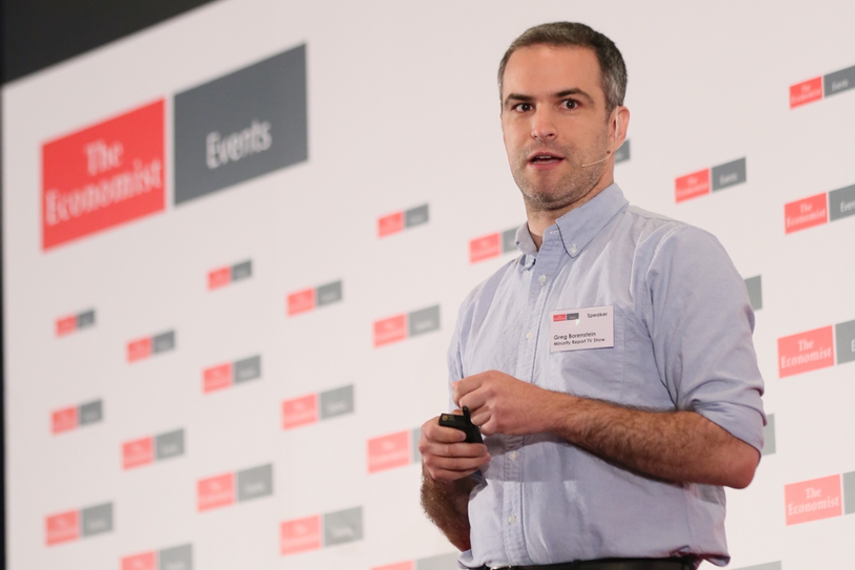
“Take a look at the communicators in Star Trek," Borenstein said. "It looks remarkably like the old Motorola flip-phones doesn’t it? That’s because Martin Cooper, who invented the first handheld mobile phone, was really into Star Trek, and he viewed the communicator as an objective and not a fantasy."
This makes the Star Trek communicator, from a TV show in the late '60s, seem like a really good prediction, until you stop and think that Star Trek was set in the 23rd century, and the mobile phone was first marketed in 1983. The creators of Star Trek never once conceived of a device that looked or felt like the smartphones we use today.
“Despite the flip-phone being so outdated, it still feels right, because science-fiction was not really trying to tell us about the technology," Borenstein said. "It was talking about the importance of mobile communication to human society, and constant access to information, and that remains true.”
This focus on deep human motivations is what makes great sci-fi great. “Frederick Pohl once said that good sci-fi should be able to predict, not the automobile, but the traffic jam,” quoted Borenstein.
Borenstein showed this clip from the original 2002 Minority Report film.
“You may think I see the technology here as the futuristic result of coarse gaze estimation and visual surveillance, but what I really see are recommendation engines and the feeling of being watched," he said. "This is what I see here, the discomfort of walking through a public space and seeing my identity used to target marketing very specifically. People are very uncomfortable with being surveilled, and this paranoia is something Minority Report really gets across."
This matters for marketers because while the technology seems to achieve the ultimate marketing objectives, it is repellent to the customers they seek. “Firefox has launched Do Not Track, the EU passed the cookie legislation requiring notification of cookies," Borenstein said. "As technical fixes they don’t do much to fix the situation, but they are an expression of the anxiety people feel about being surveilled. Now, all the adtech you’re building feels like that to users.”
As another example, Borenstein pointed to the use of VR in Minority Report.
“Hollywood actually missed this prediction because, now that we actually have VR, we’re finding that the most popular applications for it are for games like Kumoon, a physics puzzle game where you build a machine that gets a ball from one end of the room to another," Borenstein said. "Or for Tilt Brush, one of the most profound and beautiful VR interactions I’ve seen, for painting in space. What we’re seeing is that people are not using VR to be someone else, they’re using it to make something."
We want to make things, not be things, with all the #technology advancement. #MarketingUnbound #TiltBrush #Google pic.twitter.com/zzfmzahHl3
— EYE Program (@EYE_Program) May 20, 2016
And that’s the key to making futuristic predictions, he continued. “You can’t learn how people feel about technology or how they interact with it from tech changes. You have to look at the deep core human experiences and how it will be expressed with technology. The future doesn’t live in the tech, it lies in the emotion behind it.”
How to be a futurist
Borenstein was a software programmer for Makerbot and a grad student from MIT’s Media Lab when he got asked to be a futurist consultant for the TV series Minority Report, which launched last year. Here, in his words, is what went through his mind when crafting the ‘futurist guide to life in 2065’.
Start with driving forces: Find things you know without a doubt will be true
For 2065, it began with demographics. I know that there were more babies born to women aged over 50 years in 2015 than ever before. Populations will be older but older people will be more vital. In the show this was drawn on for a scene where a woman in her 80s, with a 10-year-old son, complains that her daughter doesn’t date enough because “young people don’t use this thing called Tinder anymore”.
We also know that the trend to urbanisation will continue. So in the show, Washington DC is far more built up and has an amazing public transport system and dense high-rise buildings.
Food is always a factor
Food will be affected by climate change. A UN report on the subject predicts declines in farming and fishing. The report talks about eating the slime layer, going lower down in the food chain. So the show has Wix Crickets, a restaurant where the menu features insects, 3D printed meat and algae.
Talk to experts
I can’t recommend this enough. You’re missing texture if you’re learning from articles and journalists. That’s stuff people understand. You want to talk to people who know about the weird stuff that no one understands. You learn the most amazing things that no one talks about, such as Crispr—arguably the most important tech in the 21st Century by a wide margin. It allows you to cut and paste DNA. When you talk about Crispr you’re looking the amazing potential to cure obesity, health and even appearance modifications. Applications we talk about on the show.
Above all, start with the emotional shape of the future. Bruce Stirling, a sci-fi author, described the future as old people in cities, afraid of the sky.




.jpeg&h=334&w=500&q=100&v=20170226&c=1)
.png&h=334&w=500&q=100&v=20170226&c=1)

.jpeg&h=334&w=500&q=100&v=20170226&c=1)

.jpg&h=334&w=500&q=100&v=20170226&c=1)


.png&h=334&w=500&q=100&v=20170226&c=1)




_3.png&h=268&w=401&q=100&v=20170226&c=1)


